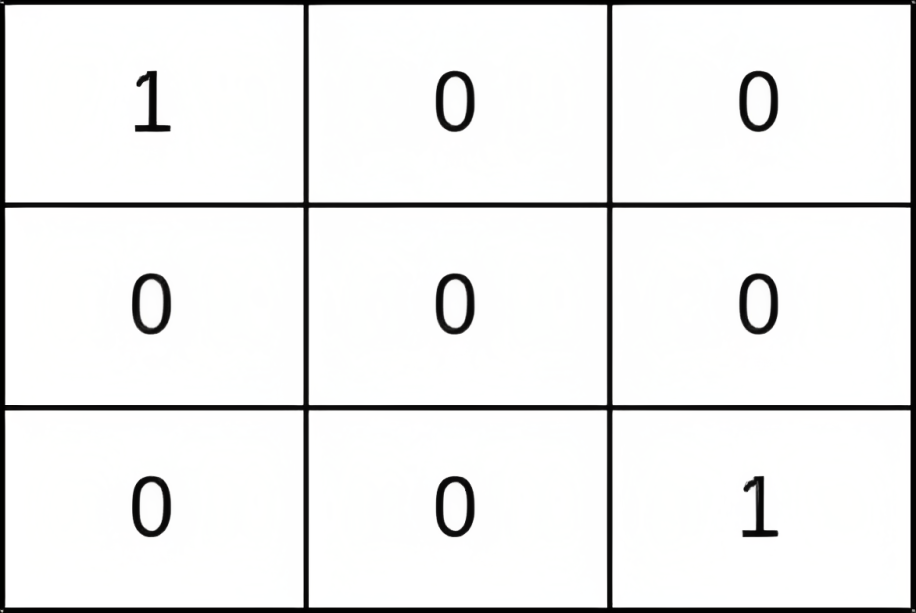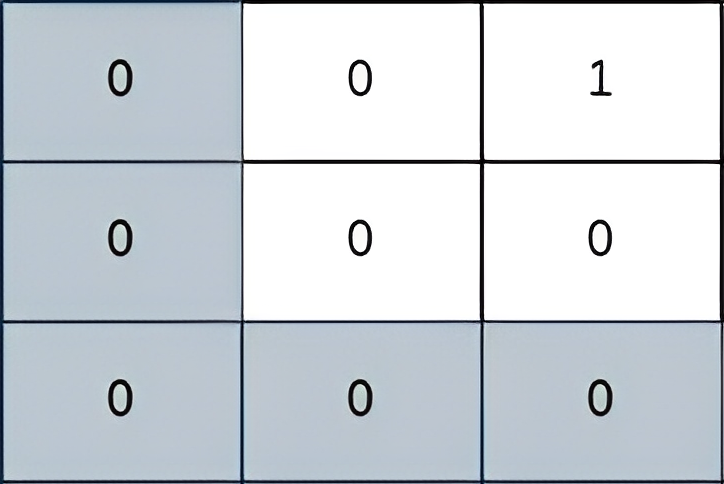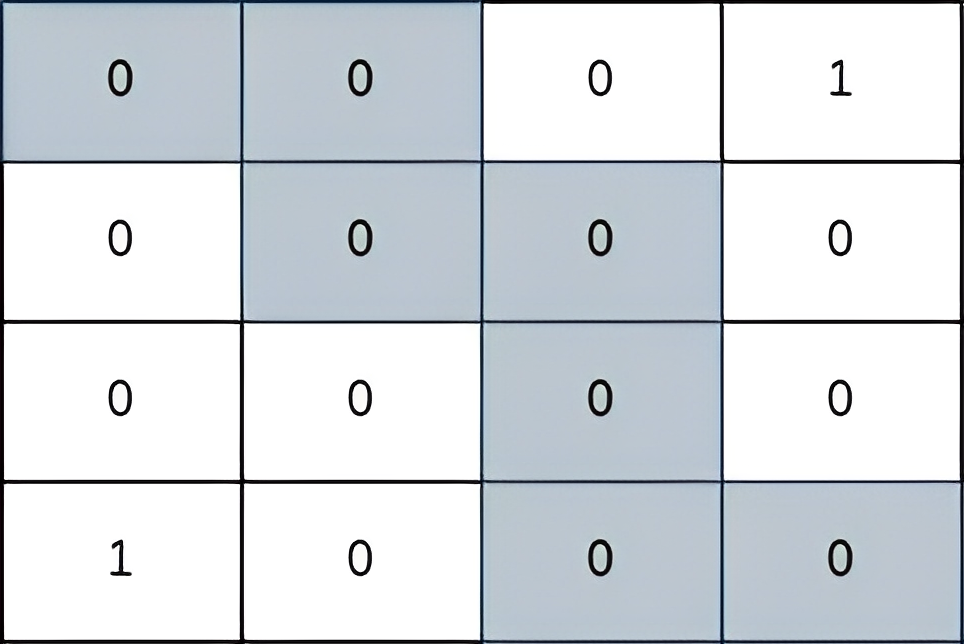找出最安全路径
难度:
标签:
题目描述
You are given a 0-indexed 2D matrix grid of size n x n, where (r, c) represents:
- A cell containing a thief if
grid[r][c] = 1 - An empty cell if
grid[r][c] = 0
You are initially positioned at cell (0, 0). In one move, you can move to any adjacent cell in the grid, including cells containing thieves.
The safeness factor of a path on the grid is defined as the minimum manhattan distance from any cell in the path to any thief in the grid.
Return the maximum safeness factor of all paths leading to cell (n - 1, n - 1).
An adjacent cell of cell (r, c), is one of the cells (r, c + 1), (r, c - 1), (r + 1, c) and (r - 1, c) if it exists.
The Manhattan distance between two cells (a, b) and (x, y) is equal to |a - x| + |b - y|, where |val| denotes the absolute value of val.
Example 1:

Input: grid = [[1,0,0],[0,0,0],[0,0,1]] Output: 0 Explanation: All paths from (0, 0) to (n - 1, n - 1) go through the thieves in cells (0, 0) and (n - 1, n - 1).
Example 2:

Input: grid = [[0,0,1],[0,0,0],[0,0,0]] Output: 2 Explanation: The path depicted in the picture above has a safeness factor of 2 since: - The closest cell of the path to the thief at cell (0, 2) is cell (0, 0). The distance between them is | 0 - 0 | + | 0 - 2 | = 2. It can be shown that there are no other paths with a higher safeness factor.
Example 3:

Input: grid = [[0,0,0,1],[0,0,0,0],[0,0,0,0],[1,0,0,0]] Output: 2 Explanation: The path depicted in the picture above has a safeness factor of 2 since: - The closest cell of the path to the thief at cell (0, 3) is cell (1, 2). The distance between them is | 0 - 1 | + | 3 - 2 | = 2. - The closest cell of the path to the thief at cell (3, 0) is cell (3, 2). The distance between them is | 3 - 3 | + | 0 - 2 | = 2. It can be shown that there are no other paths with a higher safeness factor.
Constraints:
1 <= grid.length == n <= 400grid[i].length == ngrid[i][j]is either0or1.- There is at least one thief in the
grid.
代码结果
运行时间: 1184 ms, 内存: 27.2 MB
/*
思路:
1. 使用Stream API来查找小偷的位置并计算每个单元格的安全系数。
2. 使用PriorityQueue来进行BFS搜索,并计算每条路径的最大安全系数。
*/
import java.util.*;
import java.util.stream.Collectors;
import java.util.stream.IntStream;
public class MaxSafetyPathStream {
public int maximumSafenessFactor(int[][] grid) {
int n = grid.length;
List<int[]> thieves = IntStream.range(0, n)
.boxed()
.flatMap(r -> IntStream.range(0, n)
.filter(c -> grid[r][c] == 1)
.mapToObj(c -> new int[]{r, c}))
.collect(Collectors.toList());
int[][] safeness = new int[n][n];
Arrays.stream(safeness).forEach(row -> Arrays.fill(row, Integer.MAX_VALUE));
thieves.forEach(thief -> IntStream.range(0, n).forEach(r -> IntStream.range(0, n).forEach(c -> safeness[r][c] = Math.min(safeness[r][c], Math.abs(r - thief[0]) + Math.abs(c - thief[1])))));
PriorityQueue<int[]> pq = new PriorityQueue<>((a, b) -> b[2] - a[2]);
pq.offer(new int[]{0, 0, safeness[0][0]});
boolean[][] visited = new boolean[n][n];
visited[0][0] = true;
int[] directions = {-1, 0, 1, 0, -1};
while (!pq.isEmpty()) {
int[] current = pq.poll();
int r = current[0], c = current[1], minSafety = current[2];
if (r == n - 1 && c == n - 1) {
return minSafety;
}
for (int i = 0; i < 4; i++) {
int nr = r + directions[i];
int nc = c + directions[i + 1];
if (nr >= 0 && nr < n && nc >= 0 && nc < n && !visited[nr][nc]) {
visited[nr][nc] = true;
pq.offer(new int[]{nr, nc, Math.min(minSafety, safeness[nr][nc])});
}
}
}
return 0;
}
}
解释
方法:
时间复杂度:
空间复杂度: